Having traveled around Turkey for the last ten years (and still ambling around), I’ve seen my fair share of history. The good news is that if you’re a massive history buff, Turkey is the country for you.
In Istanbul alone, you’ll see buildings dating back to 346 BCE, with the famous Hagia Sophia being the oldest in the city. Göbekli Tepe in Şanlıurfa is the country’s oldest building, dating back 11 thousand years, and was the world’s first temple.
From the Persians to the Greeks and Byzantines, the Seljuks to the Romans, and the infamous Ottomans, Turkey has seen its fair share of historical drama. Of course, all of this means impressive sights to explore today – which I have detailed in this guide for you.
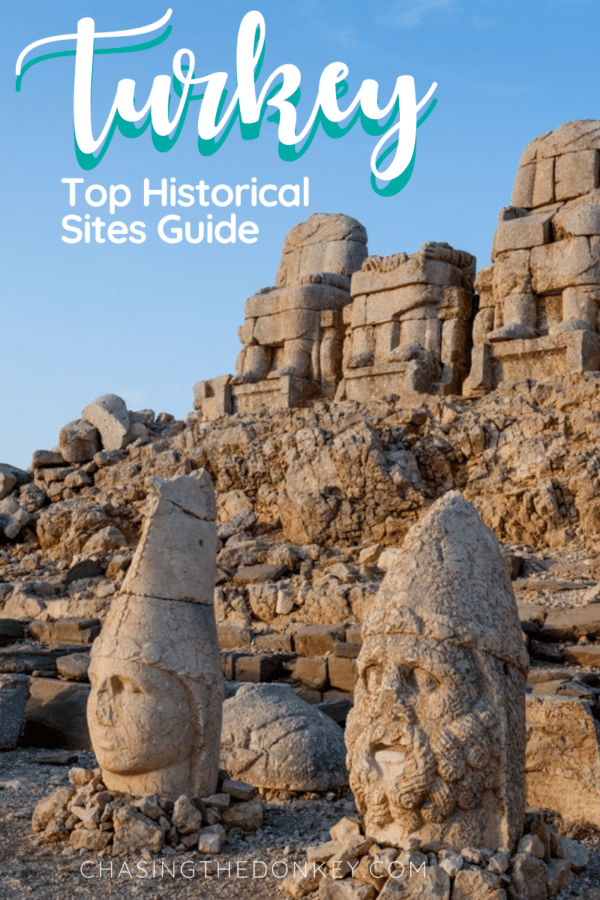
Skip Ahead To My Advice Here!
Best Historic Sites In Turkey
One of the main reasons I love Turkey so much is not just because it’s beautiful and the food is unique but also because it’s basically an open-air museum. Istanbul alone is like walking through the eras of history, and you get all of this blended together with modern-day fun.
If you’re a history fan like me, you’re in for a treat. Let’s explore the best historical sites in Turkey and learn more about them.
Map To The Best Historical Places In Turkey
Historical Landmarks In Istanbul
1. Hagia Sophia, Istanbul
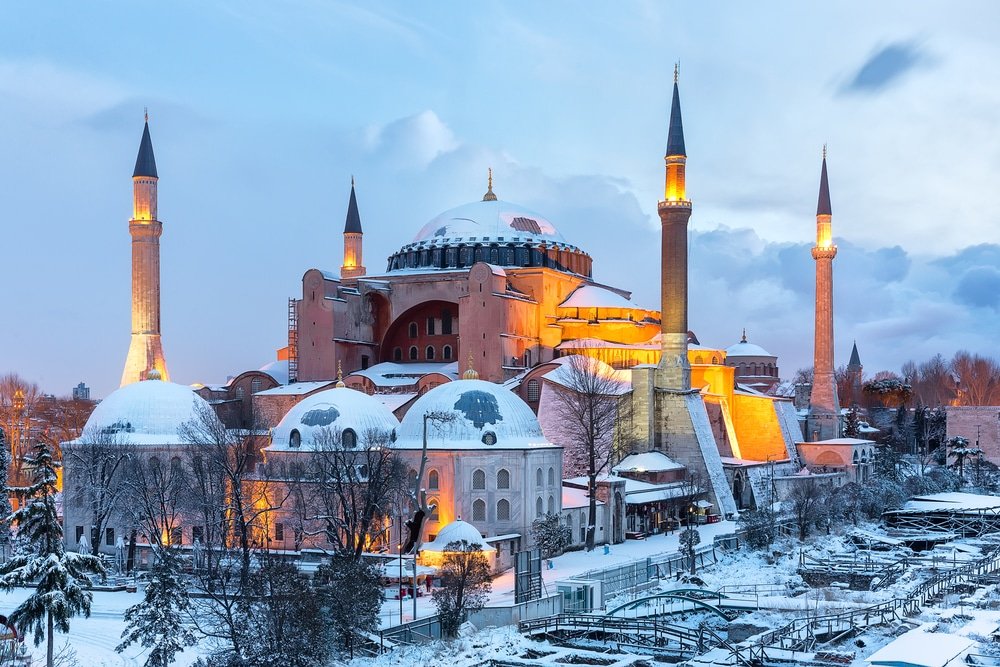
Let’s start with undoubtedly one of the most famous: the beautiful Hagia Sophia. It was initially built as a cathedral, changed to a mosque by the Ottomans, turned into a museum, and is now a mosque again.
Originally constructed as a Byzantine cathedral in the 6th century, Hagia Sophia has undergone countless transformations throughout its existence. Its name, which means “Holy Wisdom” in Greek, perfectly sums up the beauty and spiritual ambiance that you can feel as you walk past and inside it.
As you approach the outside of the building, you’ll immediately notice its striking exterior, blending elements of both Eastern and Western influences. From its intricate mosaics to its grand domes and towering minaret, Hagia Sophia blends Byzantine and Ottoman architectural styles.

Once inside, prepare to be blown away. For me, the interior of Hagia Sophia is stunning, with intricate details, arches, and domes that seem to go on forever. The hazy light that filters through the stained-glass windows also creates an otherworldly feeling.
You can visit Hagia Sophia every day between 9 a.m. and 7.30 p.m., but remember that it is a functioning mosque, so it will be closed to visitors during prayer times.
2. Topkapi Palace, Istanbul
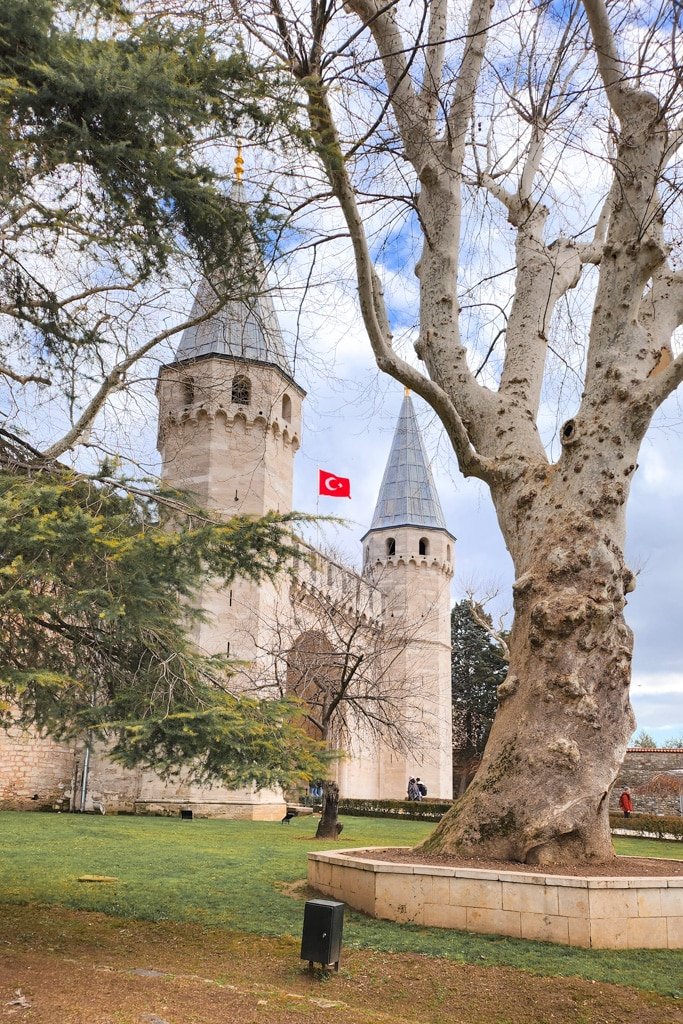
Nestled on the Seraglio Point, overlooking the dazzling views of the mighty Bosphorus Strait, Topkapı Palace served as the primary residence of the Ottoman Sultans for nearly four centuries. It was initially built between 1460 and 1478 but was updated several times after that.
I wanted to visit Topkapı because I’d read plenty about how the Ottomans loved grandeur and opulence; I wasn’t disappointed. The decoration and architecture are off the scale.
As I stepped through the palace gates, I felt like I was stepping back in time. The palace complex is an architectural masterpiece consisting of a series of interconnected courtyards, pavilions, and gardens.
One of the highlights is the Harem section. This area was once the private quarters of the sultan and his family guarded closely from prying eyes. Take your time wandering through the elaborately adorned rooms, admiring the exquisite tiles covering the walls. Imagine the dramas and conversations that went on within those walls.
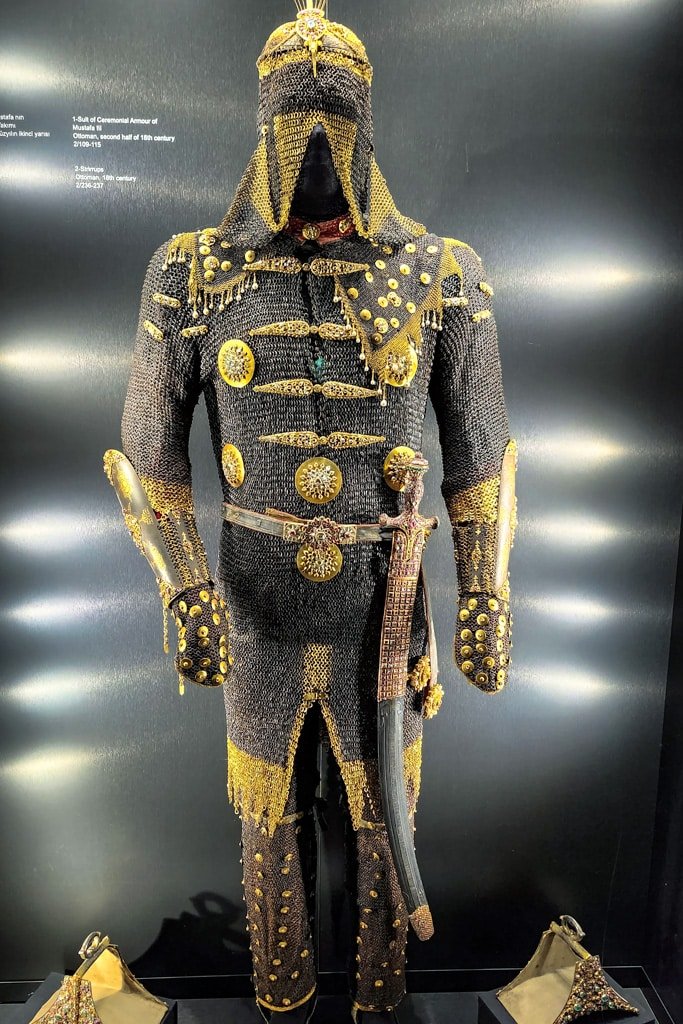
I really liked the Imperial Treasury, home to some of the most precious artifacts. From jeweled crowns to diamond-studded swords, the treasures on display provide a rare glimpse into the wealth of the Ottoman Empire.
The stunning gardens are also a must-visit. Surrounded by lush greenery and serene fountains, these gardens offer a peaceful retreat from the bustling city outside. The dramatic view over the Marmara Sea and Bosphorus is pretty special, and you’d definitely want your camera for it.
3. Blue Mosque (Sultan Ahmed Mosque), Istanbul
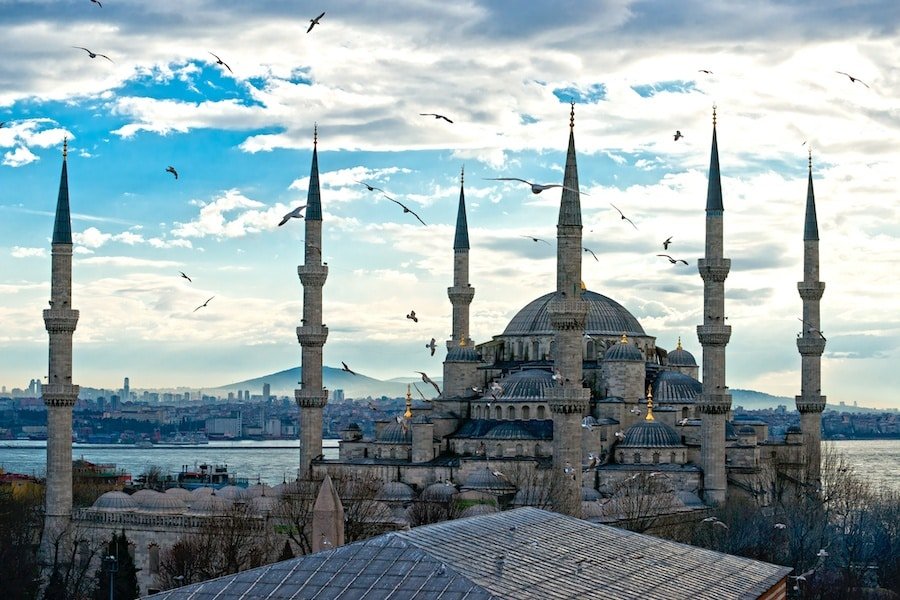
Also known as Sultan Ahmed Mosque, this stunningly beautiful mosque was at the top of my must-visit the first time I went to Istanbul. Its iconic blue-tiled interior and grand domes will take your breath away; I was almost in tears at how beautiful it is.
As you step inside, prepare to be in awe of the intricate hand-painted tiles that adorn the walls and the 20,000 shimmering Iznik tiles that give this mosque its nickname. The soft blue hues create a serene and peaceful atmosphere, making it the perfect place for quiet contemplation and reflection.
Don’t forget to look up and admire the mesmerizing domes and their cascading chandeliers. The main dome, flanked by smaller domes, is an architectural masterpiece that showcases the skill and craftsmanship of the Ottoman era.
The courtyard, with its spacious gardens and delicate fountains, offers a tranquil escape from the bustling city outside. Take a leisurely walk and appreciate the exterior of the mosque, including the six towering minarets.
While visiting the Blue Mosque, keep in mind that it is an active place of worship. Respectful clothing is required, and it’s important to be mindful of prayer times when planning your visit. If you haven’t brought a headscarf, the mosque will provide one.
4. Galata Tower, Istanbul
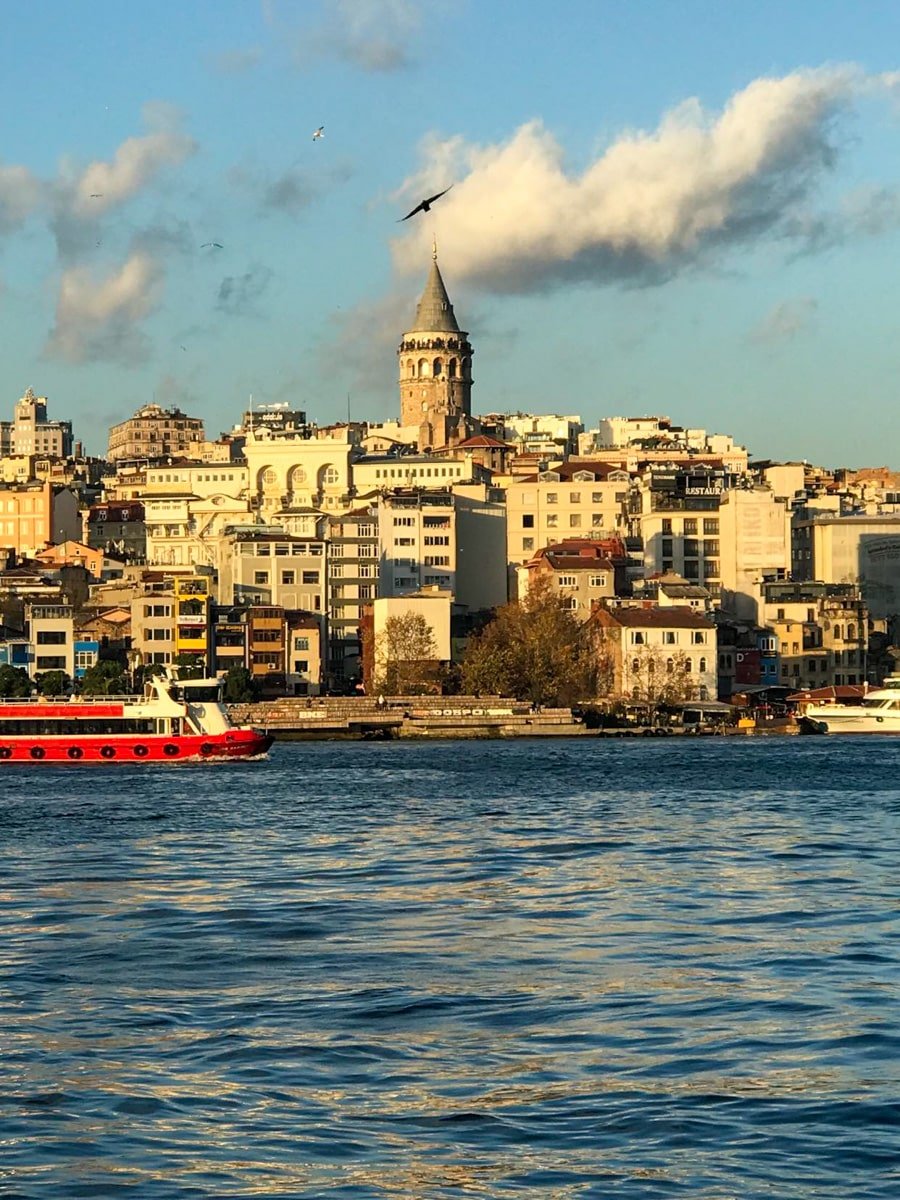
Rising above the enchanting skyline of this historic city, the Galata Tower stands tall and proud, offering breathtaking panoramic views of Istanbul’s magical surroundings.
Built in the 14th century, the Galata Tower has served various purposes throughout its existence. Originally built as a defense tower, it later transformed into an observation point, a fire lookout, and even a prison. Today, it serves as a popular tourist attraction, with a fantastic view from the top.
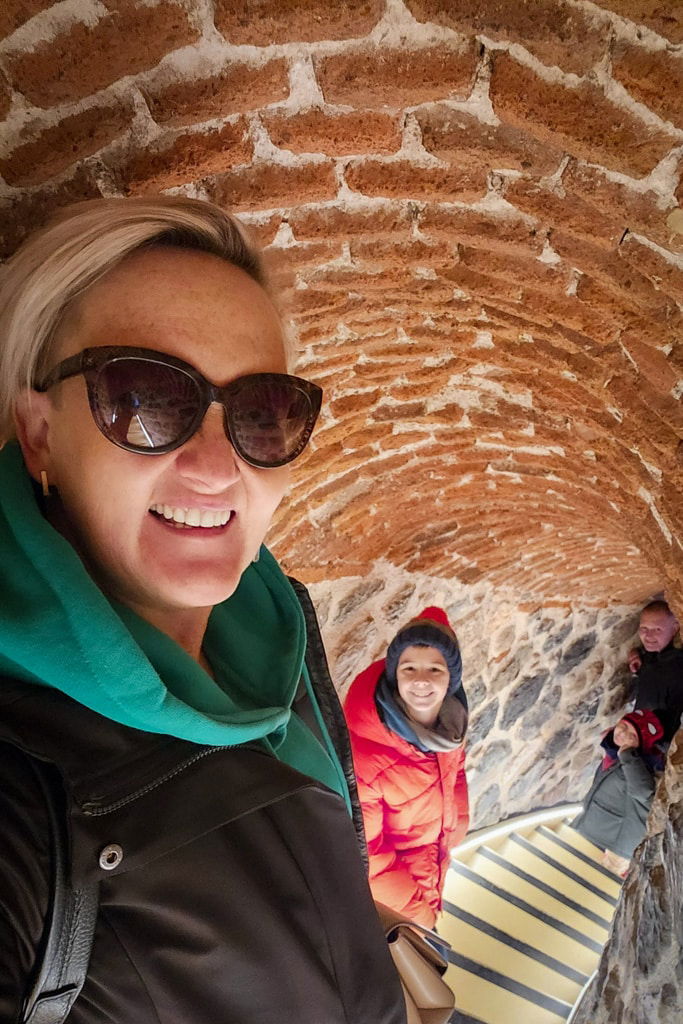
With the Bosphorus Strait on one side and Istanbul’s dazzling skyline on the other, I was left speechless by the sheer beauty that stretched out as far as I could see. It’s definitely one for the camera.
After soaking in the mesmerizing views, explore the tower’s interior. Marvel at the historical artifacts on display, learn about their captivating history through informative exhibits, and capture memories that will last a lifetime.
Historical Landmarks & Iconic sites In The Aegean Region
5. Ephesus, Selçuk

Hands down, Ephesus is one of my favorite places in Turkey. I was blown away when I walked into it, and even though I didn’t get to see all of it (it’s enormous), I definitely want to go back.
A pro tip, however: it’s best not to go in summer. Between June and September, Ephesus is very crowded, and you can’t really explore that well. Also, there is zero shade, and the entire space is bright white, so not only will you end up with a headache from the sun, but you’ll probably get sunburn, too. If you do go, remember to have plenty of water, sunscreen, and a hat!
With a history dating back to the 10th century BCE, Ephesus was once a thriving port and one of the largest cities in the Roman Empire. I was shocked at just how well-preserved the ruins are, with the Library of Celsus, the Grand Theater, and the Temple of Artemis two must-visit spots.
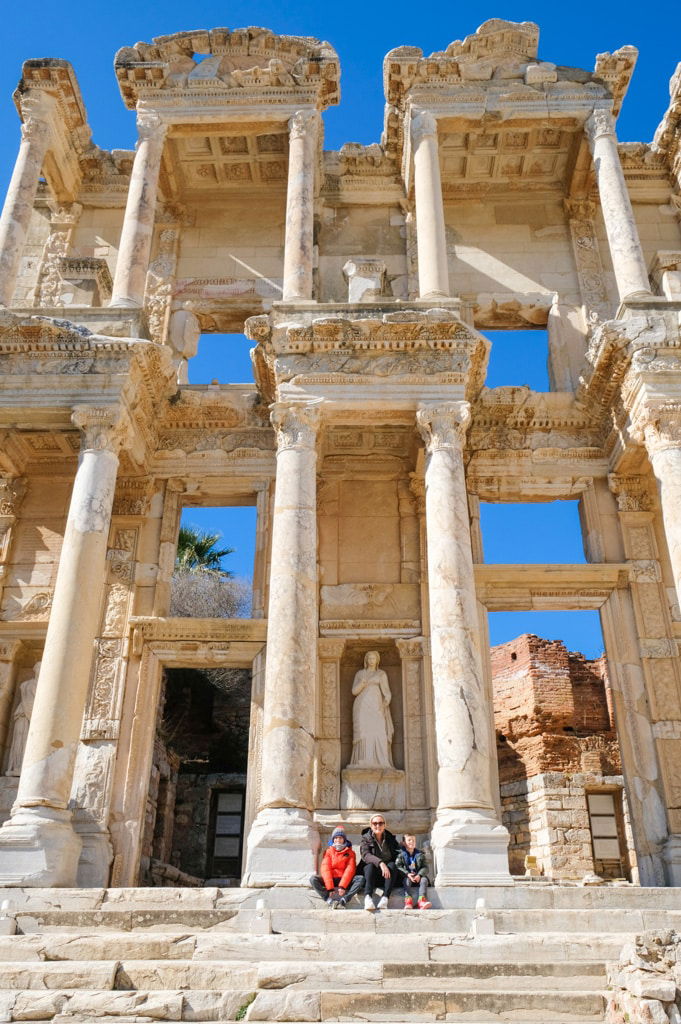
The Grand Theatre had a 25,000 capacity and is another remarkable site that showcases the architectural skills of the Romans. Imagine sitting there, in the midst of history, surrounded by ancient ruins that once hosted grand performances and political assemblies.
The House of the Virgin Mary is another famous site in Ephesus. Set on a hillside amid lush greenery, this humble stone house is believed to be the Virgin Mary’s final dwelling place, where she spent her last years after Jesus’s crucifixion.
6. Pamukkale
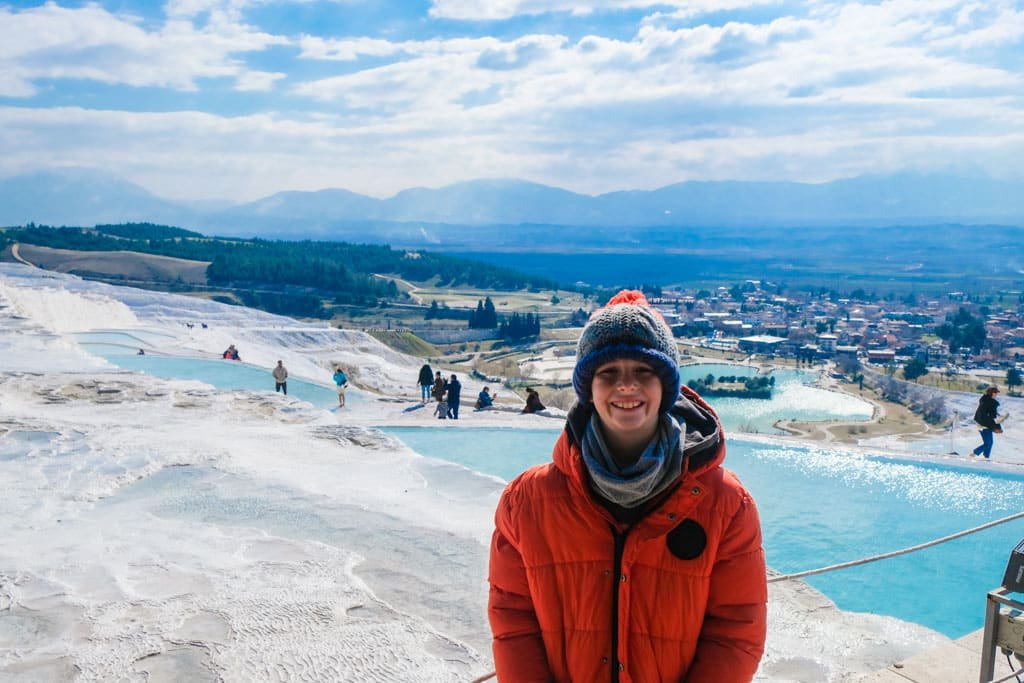
Pamukkale, meaning “cotton castle” in Turkish, is a stunning natural spot located in southwestern Turkey, close to Denizli. Known for its iconic white travertine terraces, thermal waters, and historical ruins of Hierapolis, Pamukkale is a must-visit spot.
As with Ephesus, I recommend avoiding the peak summer months. Because Pamukkale is within driving distance of the main beach resorts on the south coast, many people visit for the day, and it gets incredibly crowded, especially in the water.

One of Pamukkale’s main attractions is the cascading terraces formed by mineral-rich thermal waters that flow down the mountainside, creating an otherworldly white landscape. The natural hot springs of Pamukkale have been visited since ancient times, and today, you can still immerse yourself in the warm, mineral-rich waters that are said to have healing properties.
Aside from its captivating natural beauty, Pamukkale is also home to the ancient city of Hierapolis. This archaeological site, dating back to the Hellenistic period, features ruins of ancient buildings, temples, a theatre, and a necropolis. It really does feel like you’re stepping back in time.
Pro tip: the terraces can be slippery, so it’s a good idea to wear non-slip shoes.
7. The Temple of Apollo, Side
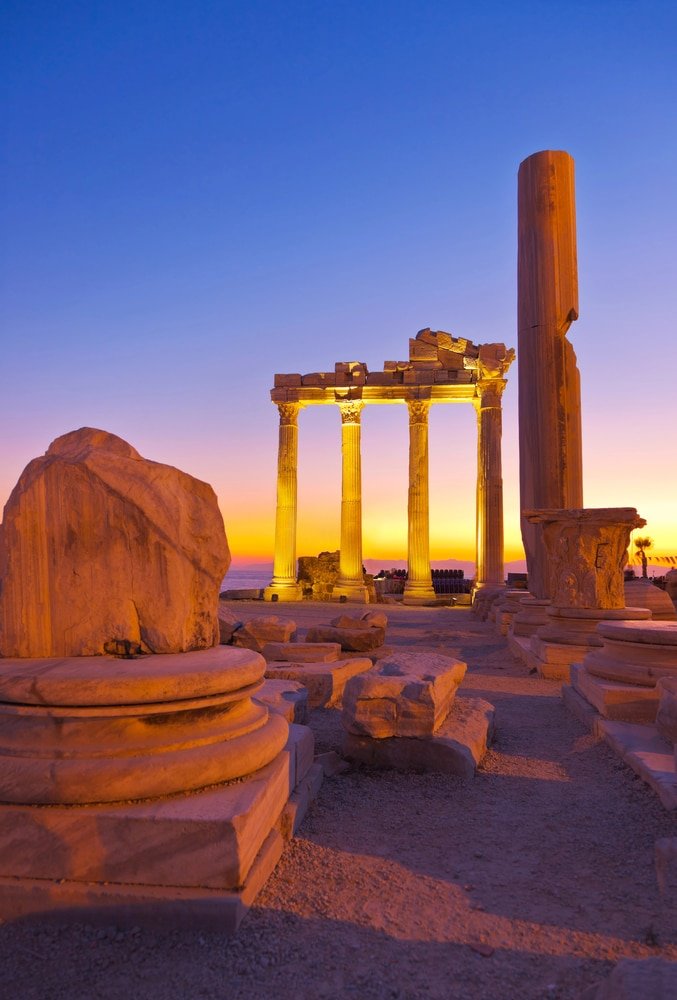
Side is a pretty beautiful place in itself, but the ancient city offers a stunning view: The Temple of Apollo. Standing proudly on a promontory overlooking the glistening Mediterranean Sea, it is a sight to behold.
The temple’s colossal columns, made of graceful Corinthian order, soar into the sky, capturing the essence of ancient Greek architecture. Of course, being so close to a beach resort, this spot is very busy during the summer months, so get there as early as possible.
Legend has it that the Temple of Apollo was once surrounded by a sanctuary that served as a hub of religious and cultural activities. Pilgrims would embark on long and arduous journeys to seek blessings and guidance from the divine oracle said to reside within its sacred walls, seeking guidance on matters of war, love, and destiny.
After exploring the main temple structure, make your way to the theatre, which is just a stone’s throw away. Dating back to the 2nd century AD, the theatre’s immense size and excellent condition make it one of Side’s true gems.
Brands We Use And Trust
Historical Landmarks In The Mediterranean Region
8. Church Of Saint Nicholas, Myra
The Church of Saint Nicholas is a magnificent place of worship located in the ancient city of Myra, a historical town in present-day Turkey.
Named after the revered Saint Nicholas (yes, I’m talking about Santa Claus), the church has a rich history dating back to the 4th century, when it was initially built. It is one of the oldest surviving Christian churches in the region.
The architecture of the Church of Saint Nicholas is genuinely stupendous. Its exterior features intricate stone carvings, domes, and gracefully arched entranceways. Inside, you’re greeted by stunning frescoes and vibrant mosaics that depict biblical scenes and the life of Saint Nicholas himself. The ethereal beauty of the interior, combined with the soft glowing light filtering through the stained-glass windows, creates a serene and spiritual atmosphere.
The Church of Saint Nicholas serves as a place of worship and a symbol of hope, kindness, and unity. It welcomes people of all faiths and invites them to embrace the virtues championed by Saint Nicholas.
9. Aspendos Theatre, Near Antalya
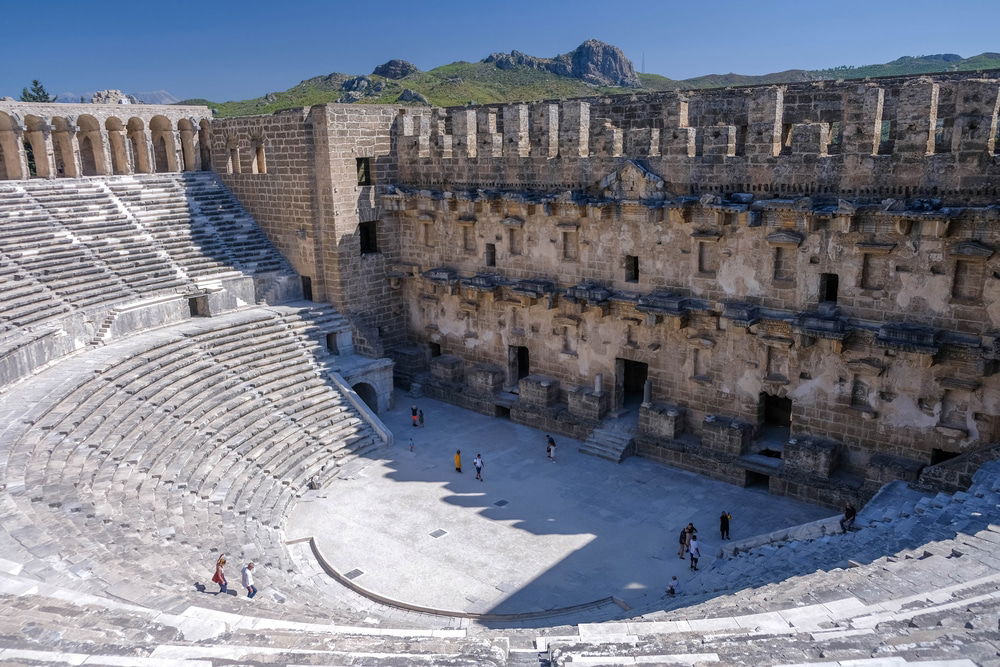
The Antalya region is one of my favorite spots; it’s stunningly beautiful and packed with amazing historical sights. One of those is Aspendos, an ancient city located near the main city of Antalya.
It is well-known for its remarkable Roman theatre, one of the best-preserved amphitheaters in the world. This architectural marvel dates back to the 2nd century AD and is still used today for various cultural events and performances.
Aspendos Theatre is a gem of the Roman Empire. Its impressive facade, towering walls, and perfectly preserved seating arrangement are awe-inspiring. The theatre has a seating capacity of around 15,000 people and was primarily used for theatrical performances and gladiatorial contests.
Aside from the theatre, Aspendos also offers visitors the opportunity to explore other associated ruins. The remnants of a Roman aqueduct can be found nearby, serving as a testament to the engineering prowess of the ancient Romans. Exploring these ruins, I couldn’t help but feel a sense of awe and wonder at the historical significance they hold.
10. Kayaköy, Fethiye

Kayaköy, also known as the Ghost Town, is a place steeped in history and mystique, and it’s somewhere that’s etched in my memory. It served as a vibrant Greek village until the population exchange between Greece and Turkey in 1923. Since then, the picturesque stone houses have been left deserted, creating an eerie yet enchanting atmosphere.
As you wander through the cobblestone streets, you’ll feel transported back in time, imagining the lives of the past inhabitants and witnessing their stories come to life. However, one word of advice: definitely wear sneakers or trainers here, as flip-flops or sandals are sure to result in a turned ankle!
One of the highlights of Kayaköy is its stunning natural surroundings. Situated amidst lush green hills and surrounded by sensational landscapes, this village is a paradise for outdoor enthusiasts. Alternatively, you can explore the area on horseback or rent a bicycle.
Kayaköy is a very popular day trip during the summer months as it’s less than half an hour’s drive away from Fethiye. For that reason, I’d recommend going early in the day, if possible, to avoid the crowds.
Historical Landmarks In The Marmara Region
11. Troy, Near Çanakkale
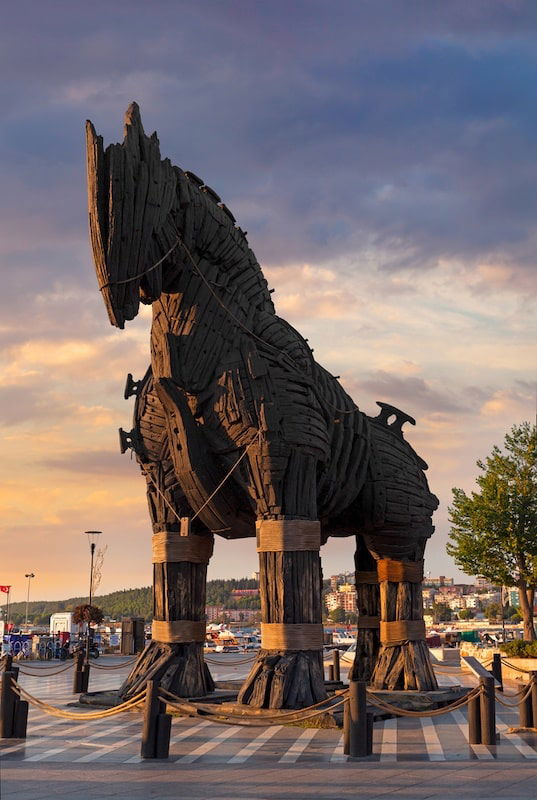
Ever since I watched the film “Troy” with Eric Bana and Brad Pitt, I wanted to go to Troy. I wasn’t disappointed. Formally Greece, Troy is now located in modern-day Turkey, close to the beautiful city of Çanakkale.
UNESCO World Heritage-listed, Troy is renowned for being the legendary setting of the Trojan War in the 13th century BCE, immortalized by epic poems like the Iliad. As I walked through the ancient ruins, I couldn’t help but feel the whispers of the past.
Of course, the highlight is the awe-inspiring sight of the famous wooden horse, a symbol of deception and victory. The horse you see is actually from the film itself.
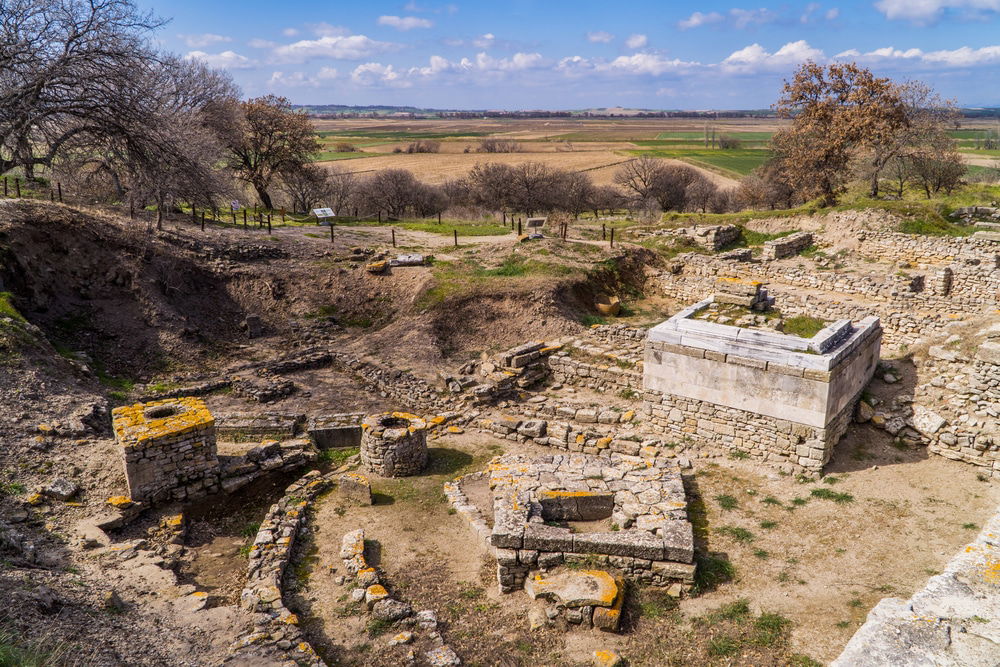
The Troy Museum is a must-visit if you want to learn more about the historical significance of Troy. Here, you can marvel at the meticulously preserved artifacts and gain insight into fascinating archaeological discoveries over the years.
I would recommend a local guide when visiting Troy because although you can read up on it first and go to the museum, there is nothing like hearing about it from a local. And trust me, this is a story you really want to hear.
12. Safranbolu, Black Sea Region
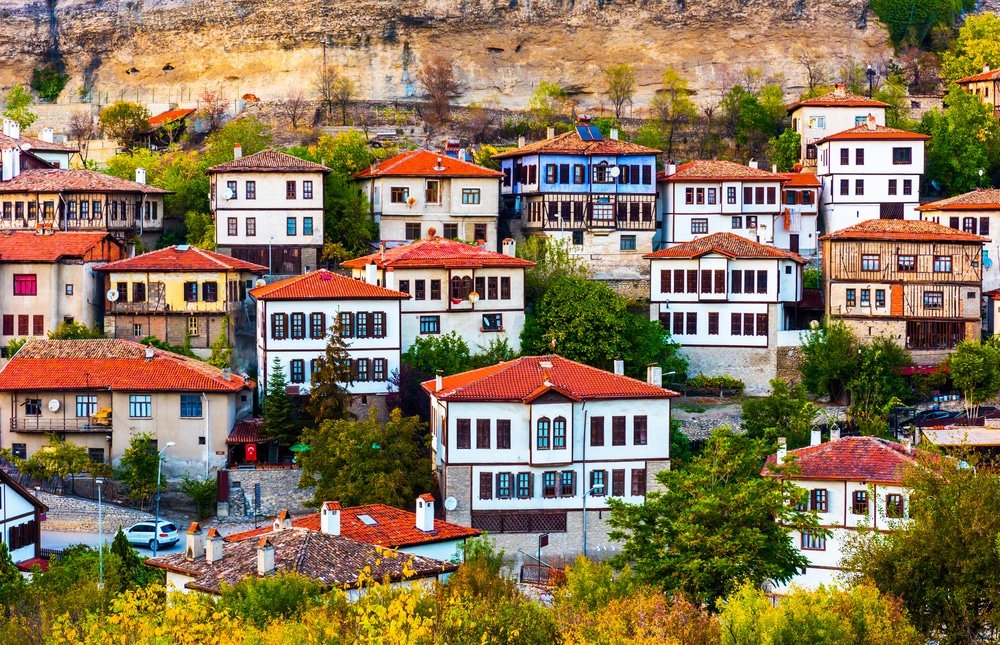
Located in the Black Sea region of Turkey, Safranbolu is a picturesque destination that transports you back in time with its well-preserved Ottoman-era architecture.
For me, one of the standout features of Safranbolu is its distinctive UNESCO World Heritage-listed Old Town. Wander through the narrow, cobbled streets and check out the old wooden houses known as “konaks,” with their intricately carved facades and courtyards.
These days, these beautifully restored buildings serve as shops, cafes, and guesthouses, allowing you to experience the authentic atmosphere of the town.
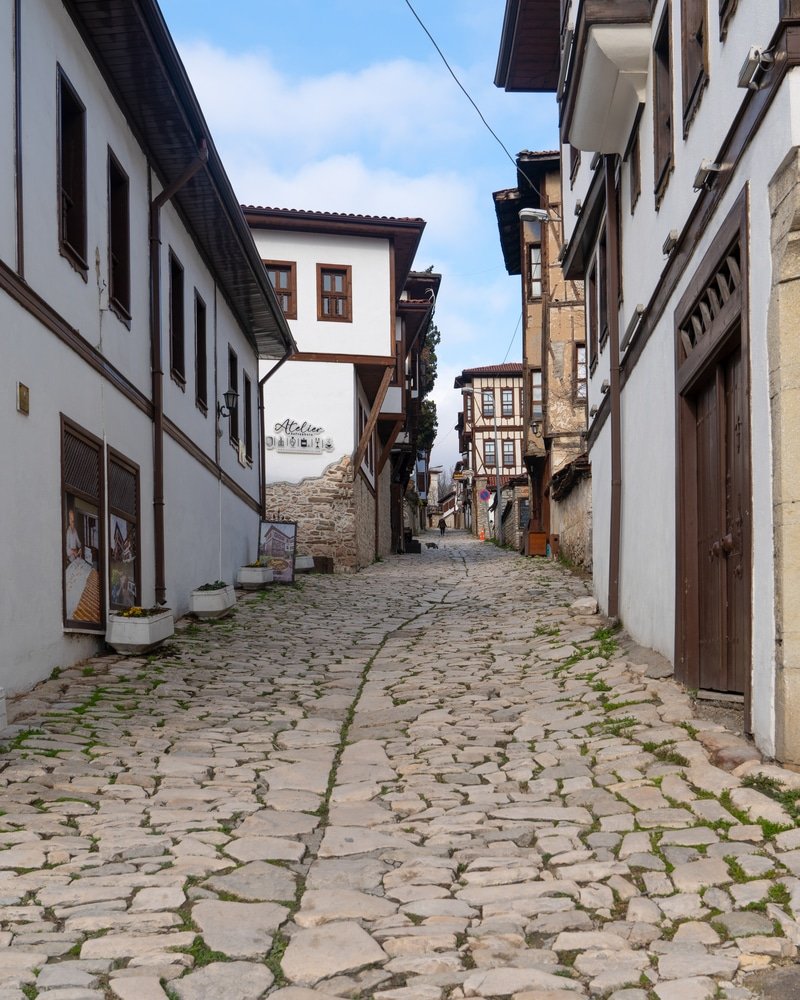
Safranbolu is also renowned for its saffron production, hence its name. The region’s favorable climate and fertile soil make it the perfect place to cultivate this precious spice. I’d highly recommend taking a tour of a saffron farm, and you can even buy some to take home.
For nature lovers, Safranbolu is surrounded by beautiful landscapes. The region boasts stunning hiking trails, verdant valleys, and majestic waterfalls.
13. The Gallipoli Peninsula

Situated in north-western Turkey, the Gallipoli Peninsula offers a unique blend of natural beauty, rich culture, and significant historical significance.
From rolling hills to picturesque coastlines, this region offers a diverse array of natural wonders. Take a hike along the rugged trails, surrounded by lush greenery and charming villages. Or why not enjoy a leisurely stroll along the golden beaches, soaking up the sun and listening to the tranquil sounds of the Aegean Sea?
For history enthusiasts, Gallipoli is a treasure trove of tales waiting to be discovered. The peninsula became the stage of one of the most significant battles of World War I, known as the Gallipoli Campaign.
Today, you can visit the many war memorials and historical sites that pay tribute to the soldiers who bravely fought here. The Gallipoli National Park and the famous Anzac Cove are must-visit spots, allowing you to gain a deeper understanding of the past while paying their respects.
Historical Landmarks In The Black Sea Region
14. Sumela Monastery, Trabzon

Sumela Monastery is located in Trabzon and is one of the most stunning places in the country. Nestled among lush green mountains and cliffs, this ancient monastery stands as a testament to Byzantine architecture and artistry.
The monastery, dating back to 385AD, is also known as the Monastery of the Virgin Mary and offers a fascinating glimpse into the region’s history and religious traditions.
Once you enter the monastery, you’ll see intricate frescoes, carved stone facades, and hidden chambers. The main chapel, adorned with vibrant murals, depicts religious scenes, and it’s one of those places that makes your jaw drop.
One of the highlights of Sumela Monastery is its unique location. Built on the side of a steep cliff, the monastery offers majestic views of the surrounding Trabzon landscapes. To reach the monastery, you’ll need to take a short but pretty easy hike through the forest; remember to take some comfortable shoes, as this isn’t a place for fashion!
Historical Landmarks In The Central Anatolia
15. Cappadocia & Its Underground Cities & Open Air Museum

Cappadocia is a destination on many bucket lists. This UNESCO World Heritage-listed place is famous for its iconic landscapes, cave hotels, underground cities, stunning views, and, of course, hot air balloons.
Nestled in the heart of Turkey, Cappadocia is a region like no other. One of the most iconic sights in Cappadocia is the fairy chimney rock formations. These incredible natural wonders were formed by volcanic eruptions millions of years ago and have been carved by wind and water over time.
Walking through this otherworldly landscape feels like stepping into a fantasy movie, with each rock formation taking on its own personalized shape.
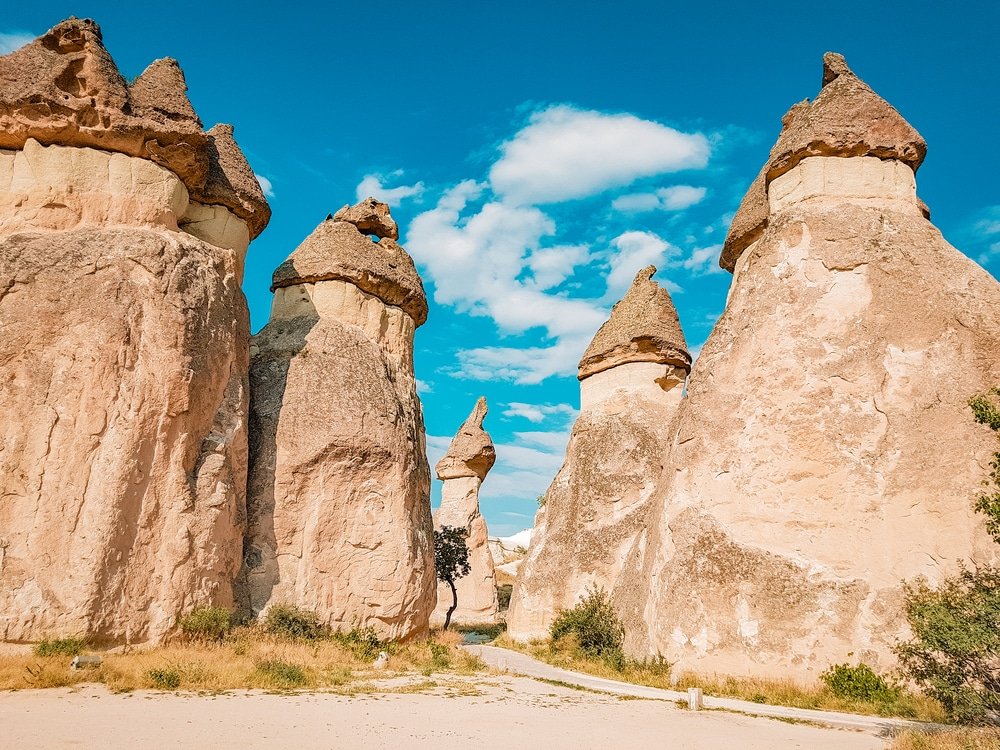
Exploring the underground cities is a must for those seeking a bit of adventure. Cappadocia is home to several ancient subterranean towns carved deep into the soft volcanic rock. Early civilizations used these intricate networks of tunnels and chambers as hiding places and protection from invaders.
When it comes to accommodation, it has to be a cave hotel and, of course, a full Turkish breakfast on the balcony with a stunning view before you. I was stunned to learn about the sheer number of bars, cafes, and restaurants in Cappadocia, so you certainly won’t be lacking when the sun goes down, either.
Famous Historical Landmarks In The Southeastern Anatolia
16. Göbekli Tepe, Near Şanlıurfa
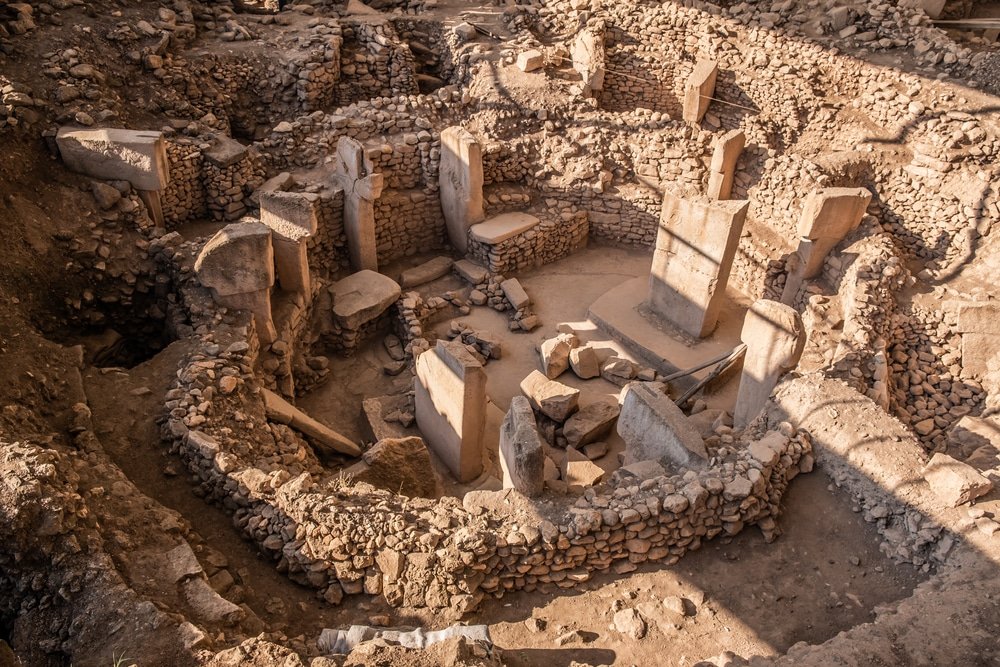
The oldest spot in Turkey is Göbekli Tepe. It’s not as easy to get to as some of the other places on our list, but it’s well worth the effort. It is located close to the city of Şanlıurfa, in the southeast of the country, which is far from the tourist resorts but pretty easy to reach via a domestic flight.
Göbekli Tepe has long attracted the attention of archaeologists, historians, and enthusiasts. This ancient site is one of the oldest known structures in the world, predating even the pyramids of Egypt!
Dating back more than 11,000 years, Göbekli Tepe has challenged conventional beliefs about the evolution of human civilization. Its massive stone pillars are a highlight, and the scale and complexity of the entire area have stunned researchers, raising questions about the capabilities of our ancient ancestors.
The purpose of Göbekli Tepe remains shrouded in speculation. Some experts believe it was a sacred site where early humans gathered for religious rituals and ceremonies. Others think it may have served as a center for social and economic exchange. Whatever the true answer, Göbekli Tepe holds the key to unlocking ancient mysteries and rewriting our understanding of the past.
If you’re a history buff, Göbekli Tepe should definitely be on your bucket list. This archaeological site is not only enigmatic, but the entire landscape around it is wild and stunningly beautiful.
Move This Adventure To Your Inbox & Get An Instant Freebie

No spam. Unsubscribe at any time.
Historical Landmarks In The Eastern Anatolia
17. Mount Nemrut, Adıyaman
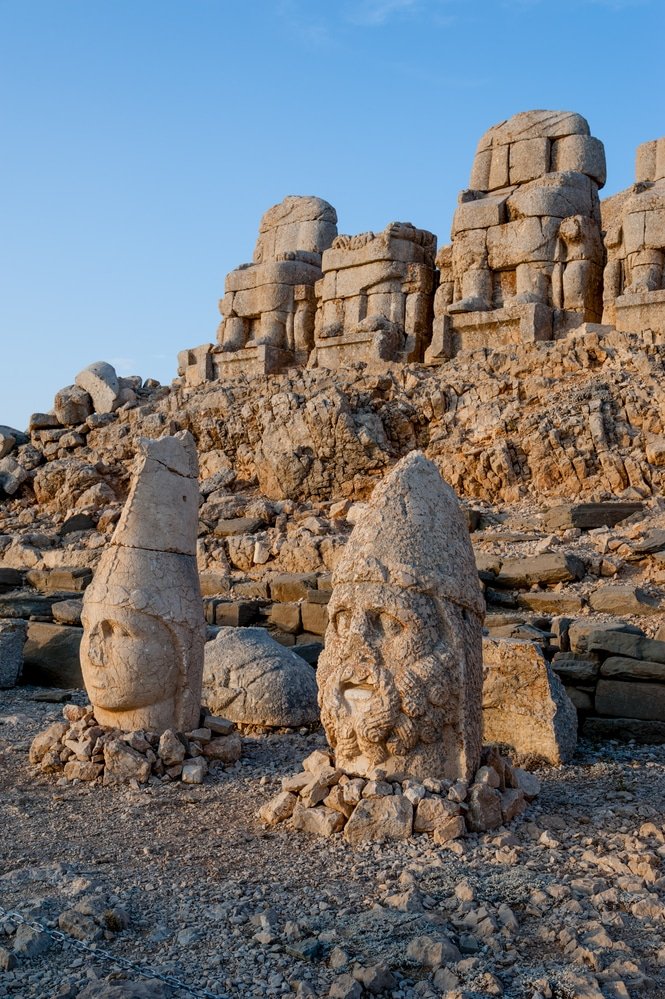
Situated in south-eastern Turkey, this UNESCO World Heritage site is a true marvel of ancient architecture and natural beauty. It’s also shrouded in mystery because nobody is quite sure why there are giant statues located at the top.
Mount Nemrut is often referred to as the “Throne of the Gods” and is connected to the Commagene Kingdom, which existed in the 1st century BCE. As you embark on the trek up this majestic mountain, be prepared to be transported back in time while also checking out the incredible view.
As you reach the summit, you’ll see the famous “East and West Terraces,” which are adorned with colossal statues. These stone sculptures, measuring up to 10 meters high, depict various gods and mythological figures such as Hercules, Apollo, Zeus, and Antiochus I.
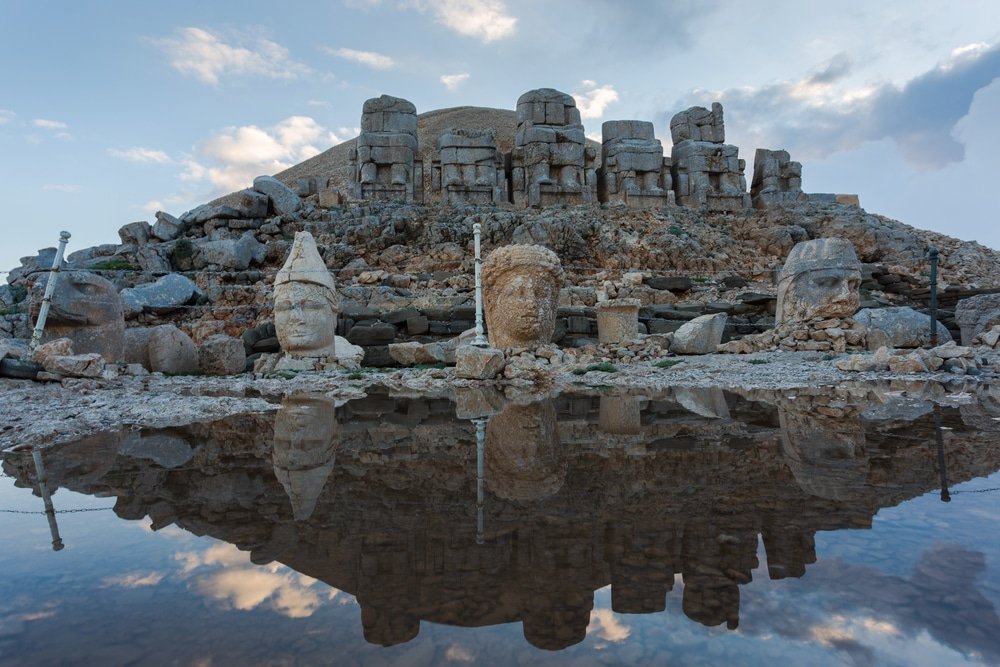
Aside from the monumental statues, the scenic views from the mountain’s peak are simply spectacular. Standing at an elevation of 2,150 meters, you’ll be treated to a 360-degree view of the surrounding landscape. Gaze out at the rolling hills, lush valleys, and the vast expanse of the Euphrates River as it winds through the picturesque landscape. Words cannot do justice to the beauty of this place.
Remember to bring your hiking boots and some warm clothing, as the summit can be pretty chilly, even during the summer months. I’d highly recommend you arrange a local guide, as they can provide insightful information about the history and significance of Mount Nemrut. Oh, and don’t forget your camera!
18. Ani, Kars
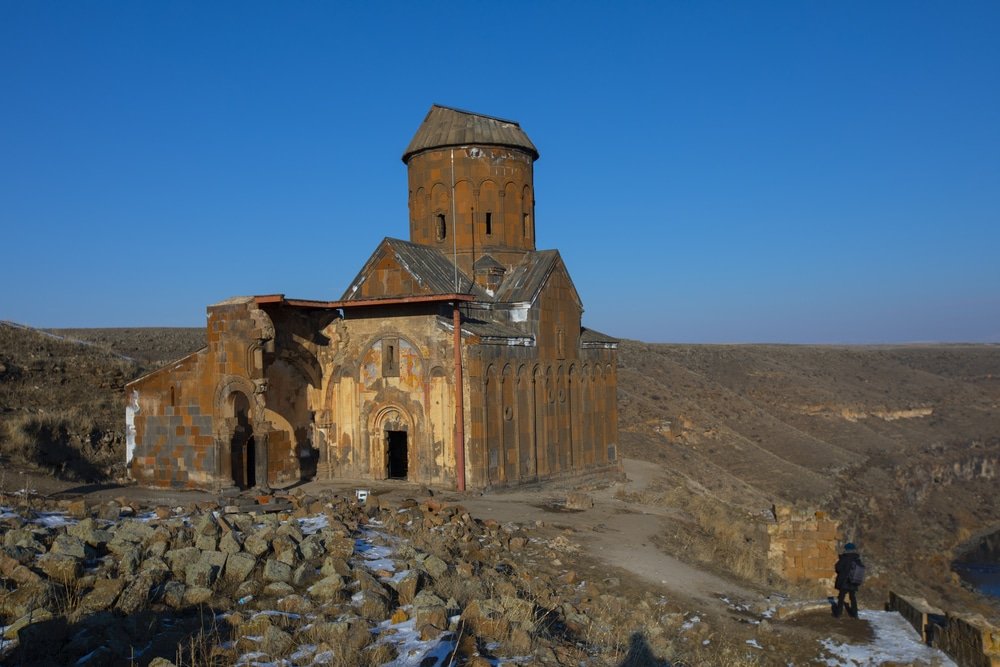
Kars is located in the north-east of Turkey and is home to the ancient city of Ani. Dating back to 3000 BCE, Ani was once a bustling medieval city and served as the capital of the Armenian Bagratid dynasty. Its strategic location on the Silk Road made it a melting pot of different cultures and religions.
Among the standout structures of Ani is the imposing Ani Cathedral, also known as the Church of Saint Gregory. This majestic cathedral boasts intricate stone carvings, dazzling frescoes, and a remarkable architectural design. As you take in the grandeur of this historical site, it’s hard not to be in awe of the craftsmanship and the stories it holds within its walls.
The Church of the Redeemer is a must-see, with its elegant dome and stunning ornamental details. The church, despite its weathered exterior, still carries an air of magnificence, and you can’t help but appreciate the intricate artwork and mosaics that adorn the interior.
Apart from the architectural wonders, Ani also offers panoramic views of the surrounding landscapes. Standing atop the ancient city’s walls, you’ll be treated to a sight like no other. The vast plains, the flowing rivers, and the distant mountains seamlessly blend together, creating a picturesque setting that will leave you spellbound.
Top Historic Attractions In Turkey FAQ
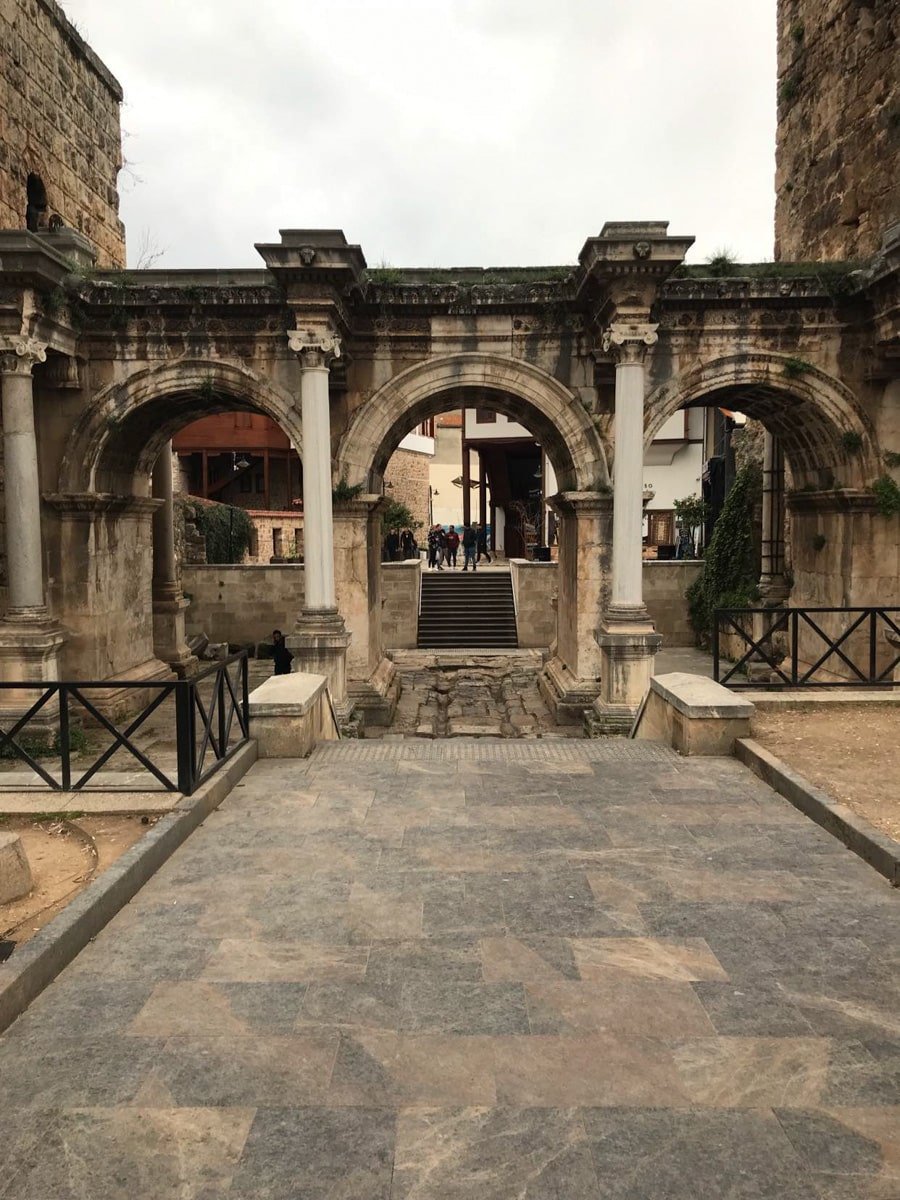
Is it safe to visit historical sites in Turkey?
Turkey is generally a safe destination for tourists. However, it’s always advisable to exercise caution and check travel advisories before planning your trip. As long as you adhere to regular safety precautions, you’ll be more than fine.
How do I plan my itinerary?
Start by researching the historical sites you’re interested in visiting and consider the time needed at each location. Depending on your preferences, you can plan your itinerary regionally or chronologically. We also recommend including some leisure time to experience Turkey’s vibrant culture.
Can I visit these historical places all year round?
Yes, you can visit Turkey’s historical places year-round. Spring and autumn offer pleasant weather with fewer crowds, making them ideal times to explore. However, each season has its own charm, so plan your visit based on your personal preferences and priorities.
What are some must-visit historical places in Turkey?
Turkey boasts a myriad of remarkable historical sites. Some iconic destinations include the ancient city of Ephesus, the stunning travertine terraces of Pamukkale, the fairy chimneys of Cappadocia, and the mighty ruins of Troy. These are just a few highlights, among many others waiting to be discovered!
Are these historical places easily accessible?
Yes, most of these historical places have good infrastructure and accessibility. Transportation options such as buses, trains, and domestic flights make it convenient to reach these sites. Additionally, many tour agencies and guides operate in these areas to assist visitors in exploring Turkey’s treasures.
Are these historical places suitable for families with children?
Absolutely! Visiting historical places in Turkey can be educational and enjoyable for the entire family. Kids can immerse themselves in ancient stories and legends, making history come alive.
Can I take photographs of these historical places?
In general, photography is allowed at historical sites in Turkey. However, some museums or specific areas may have restrictions, so it’s always a good idea to check local regulations.

